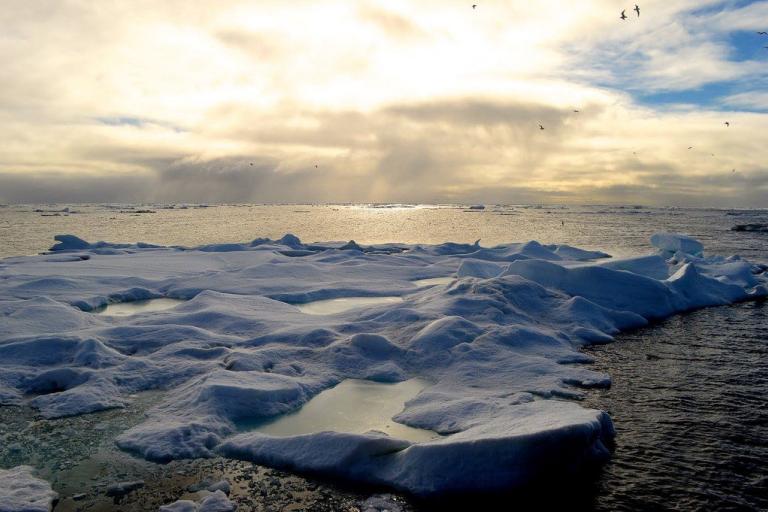Arctic Summer Special Observing Period starts
An Arctic summer special observing period is taking place from 1 July to 30 September as part of the Year of Polar Prediction (YOPP). Extensive extra observations will be carried out at numerous land stations in the Arctic as part of field campaigns and expeditions, and by autonomous instruments. Numerical experimentation and internationally coordinated verification activities will use the additional observations for forecast evaluation and observational impact studies.

An Arctic summer special observing period is taking place from 1 July to 30 September as part of the Year of Polar Prediction (YOPP).
Extensive extra observations will be carried out at numerous land stations in the Arctic as part of field campaigns and expeditions, and by autonomous instruments. Numerical experimentation and internationally coordinated verification activities will use the additional observations for forecast evaluation and observational impact studies.
The summer observing period follows a successful Arctic winter campaign. In total there are four special observing periods – covering both Arctic and Antarctic summer and winters – during the Year of Polar Prediction.
 The Year of Polar Prediction is taking place from mid-2017 to mid-2019 in order to cover an entire year in both the Arctic and Antarctic and involves the World Meteorological Organization (WMO), Germany’s Alfred Wegener Institute (AWI) and a wide array of partners around the globe.
The Year of Polar Prediction is taking place from mid-2017 to mid-2019 in order to cover an entire year in both the Arctic and Antarctic and involves the World Meteorological Organization (WMO), Germany’s Alfred Wegener Institute (AWI) and a wide array of partners around the globe.
It aims to improve predictions of weather, climate and ice conditions in the Arctic and Antarctic to minimize the environmental risks and maximize the opportunities associated with rapid climate change in polar regions and to close the current gaps in polar forecasting capacity.
The measurements during the Arctic summer special observing period will enable identify ways to improve forecast systems towards more accurate and reliable forecasts of weather and sea-ice conditions in the Arctic, and to provide recommendations for the future Arctic Observing Systems.
Forecast centres will provide model data in unusual detail, in particular for Arctic YOPP supersites such as the Canadian sites Whitehorse and Iqaluit (for exact locations of YOPP Supersites see the YOPP Observations Layer).
As during the first winter observational period, many field campaigns and expeditions are carried out by YOPP-endorsed projects to provide specific observational data. These will enable better understanding and representation of environmental processes in the Arctic in weather, climate, and sea ice models. Three examples:
- The YOPP-endorsed project Arctic Climate Across Scales (ACAS) will embark on the Swedish research icebreaker Oden on 1 August to build an ice camp north of Svalbard and drift on the multiyear ice floe for about five weeks. During the expedition, they will monitor the ice surface and atmospheric column.
- As part of the YOPP-endorsed project KPOPS, radiosondes will be launche 4 times daily from 5 August to 17 September over the Chukchi Sea and north of the East Siberian Sea from the Korean research icebreaker Araon. Data will be broadcasted to the GTS whenever the satellite data transmission allows.
- Extra weather balloons will be launched for YOPP during three cruise legs through the YOPP-endorsed Nansen LEGACY project aboard the Norwegian research vessel RV Kronprins Haakon in the northern Barents Sea.
- Radiosondes will be launched twice daily (00UTC and 12 UTC), and data will be sent to GTS in real time, during late July to early September from Chinese icebreaker XUELONG during the IAS campaign.
The Antarctic Special Observing Period is scheduled for the coming austral field season from 16 November 2018 to 15 February 2019. Another Arctic Winter Special Observing Period will take place from 1 February to 31 March 2020; it will be aligned with the first year-round International central Arctic Drift Expedition MOSAiC.
Details on these and other YOPP-endorsed projects contributing to the current SOP can be found through the YOPP Explorer.










